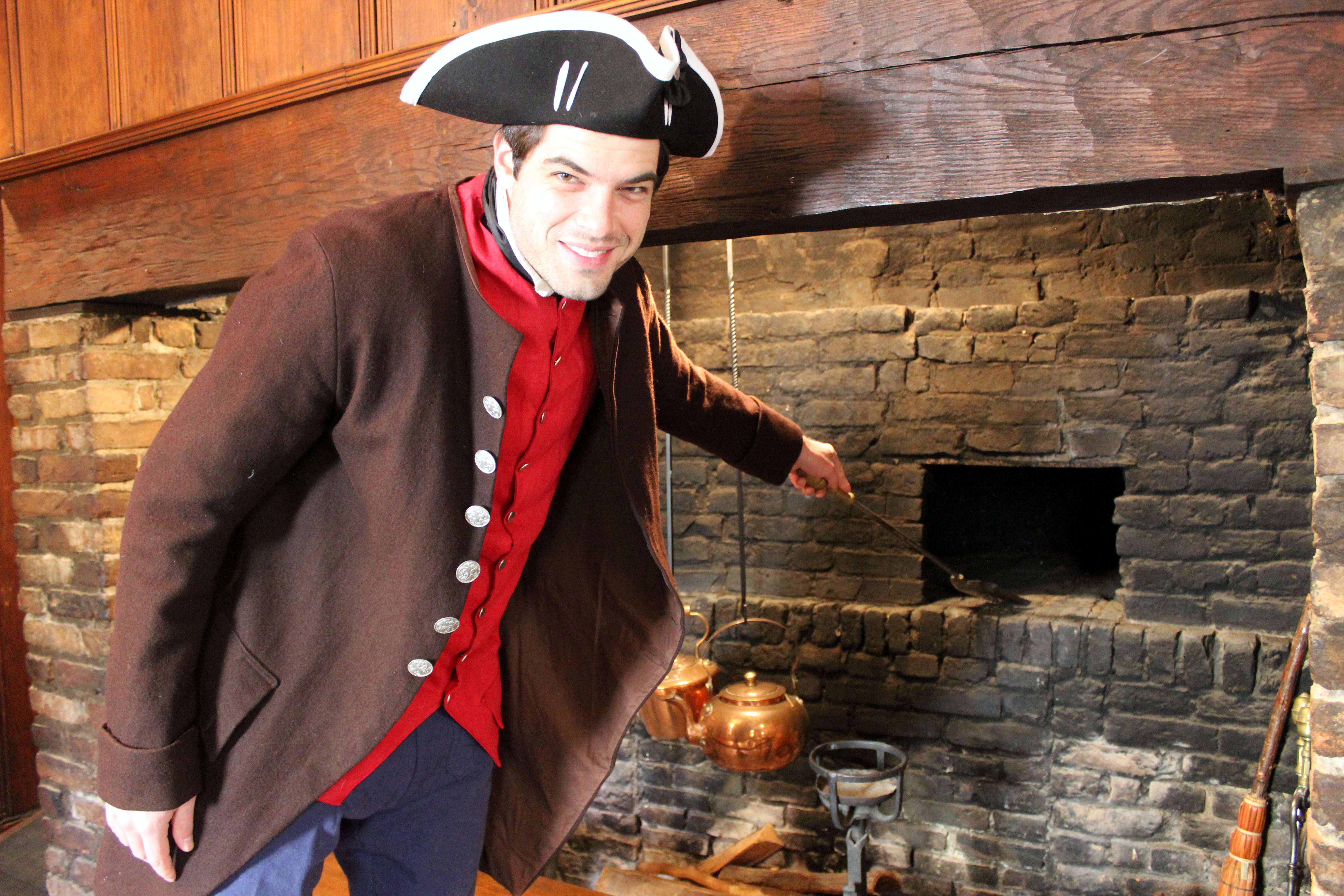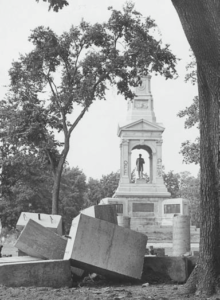
Living in the Hooper-Lee Nichols House
This August, former HLN House resident Malcolm Fraizer visited us with his daughter, Holly, and his grandchildren, Daniel and Ruth.
While I know this building as my office, Malcolm called it home. It was fun for me to hear how the spaces were used back when it was a bustling household. For example, the Bosphorus Room, where we hold many a meeting and event, was a parlor only used for tea on Sundays. What is now my office was Malcolm’s bedroom, and before that, it was Mrs. Emerson’s sewing room. Brattle Street looks somewhat the same, but one of Malcolm’s greatest memories of the street will always stick with me. In 1965, he parked his car out front with his then-girlfriend, Constance. Although it was very early in their courtship (their 6th date), she had donned a dress just for the occasion. She knew he would propose to her that day, and that she would say yes. They had a wonderful life together until Constance passed away last year.
Historians love old buildings, but we often forget about the lives that were lived in them. The Hooper-Lee-Nichols House has seen so much in its 300+ years–birthdays, weddings, births, deaths, breakfasts, family arguments, tears of joy, and tears of sorrow. It was such a treat for me to be reminded of this with Malcolm’s visit.
We wrote about our last visit with Malcolm and his family in the Fall 2016 Cambridge Historian, and reprint it below. I hope you enjoy it as much as I did.
–Marieke Van Damme, August 2019
Interested in learning more about Frances White Emerson? Check out this article from the Proceedings, “Life in the Hooper-Lee-Nichols House: The Emerson and Dow Years”
Living in the Hooper-Lee Nichols House, Fall 2016
By Malcolm Frazier, as told to his daughter, Holly Ballard
This past spring, Malcolm Frazier, a former resident of the Hooper-Lee-Nichols House, visited with his wife, Constance, his daughter, Holly Ballard, and his grandson, Daniel Malcolm Ballard. Malcolm lived in the house from 1938 to 1951 with his grandmother, Frances White Emerson, who donated the house to the Cambridge Historical Society in 1957.
When and how did you live in the Hooper-Lee-Nichols House?
I came in September 1938 at age nine, just before the Hurricane of ’38. My mother was living on a ranch in Nevada, and I came here to attend the Shady Hill School and live with my grandmother, Frances White Emerson.
What do you recall about living there—the house, street, and neighborhood?
I lived on the third floor in the East Chamber “nursery” above my grandmother’s bedroom, and later in the back room on the second floor. I stayed from 1938 to the spring of 1951, when I graduated from college. My grandmother’s chauffeur/handyman, Greg Ware, drove me to school. After attending Shady Hill from grades four to eight, I attended the Middlesex School in Concord. But the house was still my home, even when I was in boarding school.
There were a number of kids my age in the neighborhood, including Andy Leighton, who is now a member of the historical society. During the hurricane, we didn’t lose any trees, but the branches were piled as high as the second story of the house.
In 1944, my grandmother decided not to get a Christmas tree because of the war effort. I saved up my allowance and bought a small tree and hid it under my bed. On Christmas Eve, she relented, but knew something was up when I argued that we shouldn’t get a tree. So, I brought down the Christmas tree, small as it was. She decorated the house traditionally at Christmas and had burning candles in the windows and on the tree. I was terrified the house would catch fire!
When we were older, my younger sister Brooke and I would sit inside the enormous fireplace in the library on small wooden chairs in order to smoke. My grandmother did not approve of smoking, and this was her solution!
For the last two years of World War II, my grandmother put her car up on blocks and walked to the trolley on Mount Auburn Street or to Harvard Square. She enjoyed gardening and always had flowers in the front yard.
What was needed for upkeep of the house when you lived here?
My grandmother had two maids, a cook, and a handyman until the start of the war, when she had only one maid, a cook, and a handyman/chauffeur. Our maid, Emily, cared for me as a young child and came to my wedding when I was married.
Tell us about your grandmother, Frances Emerson.
As a grandmother, she was strict but fair. My contact with her was limited, but she would read to me every night as a small child. When I was older, I would dine with her and her husband, William Emerson, and she would try to inculcate table manners in me.
She was wealthy and generous, and she cared deeply for her extended family. She had four children, and each of them had four, and so on. Every Christmas, the whole family would gather at my uncle’s house. She was the “glue” that held the family together. When she passed away, she had about 80 descendants.
She valued education and history. Guests would come to see her wonderful collection of William Blake’s written work and paintings. She had the Rossetti Manuscript, which was his original journal. It was the notebook that had “Tyger Tyger Burning Bright” in his own handwriting.
How did she acquire the house?
She bought the house around 1920. Her father, William Augustus White, was a great book collector. He went to an auction in Ireland for a Shakespeare Quarto, which he purchased for only £25, and then researched and discovered was one of a kind. My grandmother and her husband had been renting the house directly across the street, as he was working as the Dean of Architecture at MIT. She fell in love with the Hooper-Lee Nichols House, so her father sold the Shakespeare Quarto to a friend for $50,000 and gave it to her to buy the house.
Why did she decide to donate it to the Cambridge Historical Society?
I don’t know entirely why she decided to donate it, but I’m not sure anyone in the family was prepared for the house’s upkeep. My grandmother was a very generous woman and frequently donated and volunteered for charities such as the Red Cross.
What has changed about the house, street, and/or neighborhood?
It is very much the same as it always was, except the exterior was a more pink color. Brattle Street itself has not changed much. The adjacent side street, Kennedy Road, had fewer houses. Appleton Street had open land, a big barn, and an open field.
What did you like the best about living here?
It became the place I learned about family. My grandmother had never raised a small child independently, as she had governesses for her own children. I was lucky because I got a very good upbringing. William Emerson had also never brought up young kids (her children had been grown when they married), but he was so nice to me. If he ever needed to reprove me, he removed his monocle and just looked at me. His colleagues at MIT called that look “the silver sword with an edge of steel.”
Frances and William Emerson were very happily married, and I learned how to be a husband from him. Every morning, for example, he would take the toast and cut it into uneven halves, and offer her a piece with his thumb firmly on the smaller piece. She would argue that it wasn’t fair, and it was a daily ritual. Meals together were very happy, but if they wanted to discuss something without my understanding, they would speak in rapid French. They had both spent World War I in France and were fluent. I could never catch up!
I loved this home and all it meant to me so much that I brought my girlfriend Constance to the house in 1965 to ask her to marry me. To my delight and happiness, she said “Yes”! I would have loved for my grandparents to have met her.
Do you miss living here now? If you had the opportunity, would you live here again?
Everything but the winters! Yes, because my memories were so
happy.






